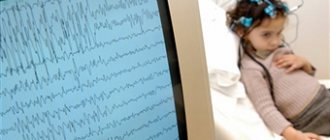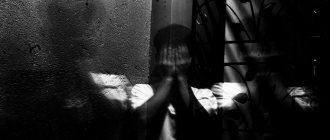Epilepsy is a neurological disease of the brain that can manifest itself in a variety of ways: loss of consciousness, aggressiveness, muscle spasms, seizures, loss of bowel and bladder control. Epilepsy is associated with excessive activity of certain groups of brain cells. Depending on the damaged area, the attack spreads to one part of the body or the entire body at once. After an attack of epilepsy, a person may experience slight memory lapses, lose orientation in space, and also have temporary disturbances in movement and perception of the world through the senses.
Epilepsy in old age is a common problem associated with increasing life expectancy. 30% of cases of epilepsy occur in old age. Epilepsy is associated both with general changes in the body due to aging and with the presence of related diseases.
Epidemiology
The incidence of epilepsy has a number of factors that could trigger its development. According to epileptologists, the disease is distinguished by its bimodal nature. Most often, this diagnosis is made to newborns and young children, as well as elderly people over 60 years of age. According to medical statistics, epilepsy is diagnosed most often among older people. This group of patients exhibits seizures that were unprovoked. Sometimes pathology is associated with acute processes occurring in the body.
According to the data obtained, the first seizure among elderly people was recorded in 136 cases among 100 thousand subjects. Active epilepsy among older people occurs in 1.5%. Among patients who are in a nursing home, the active form is observed in 5%. The prevalence of this pathology is growing every year.
Diagnosing epilepsy in old age is extremely difficult. To establish an accurate diagnosis, the attending physician completely studies the patient’s medical history, analyzes the frequency and nature of complaints. Eyewitness accounts who may have been present during epileptic seizures are also taken into account. Most often, attacks begin when the disease progresses. It is likely that the prevalence rates of epilepsy among people over 60 years of age are lower than those reported. However, the prevalence of the disease among this population group is much higher than among young people. The figure is twice as high.
Causes of heart attacks in older people
Heart failure is one of the most common illnesses faced by older adults. Indeed, with age, everyone develops previously hidden diseases, and you need to be prepared for this. It is important to know how the symptoms of this heart pathology occur and how to deal with them.
Heart problems are becoming more common in older age. They are quite understandable: the body wears out, various diseases develop and worsen, including atherosclerosis and other vascular problems. All this inevitably leads to heart weakness. Therefore, everyone needs to know how to treat heart failure in older people.
With age, a person experiences certain functional changes in the cardiovascular system of a negative nature. A number of factors lead to this:
- Increased incidence of arterial hypertension (in simpler terms - increased blood pressure).
- The prevalence of coronary heart disease, as well as the combination of these two diseases.
- Sclerosis and/or atrophy of the myocardium in the elderly population.
- Progressive atherosclerosis of both large and small arteries, causing a decrease in the elasticity of blood vessels, which, in turn, provokes an increase in the load on the heart.
- Decrease and change in the heart’s reaction to various stresses (both physical and emotional).
- Calcification of heart valves leading to hemodynamic shift/shifts.
- A recorded increase in the level of vascular stiffness, often caused by their thickening and focal fibrosis.
There is still quite a significant number of age-related changes that occur in the body, and when a person encounters them, the heart is the most unprotected organ of the body.
Treatment of heart failure in older people should be comprehensive, in several of the most important areas. Among them are the following:
- Strengthening and supporting the contractility of cardiac tissue.
- Reducing the retained volume of water and sodium salts.
- Partial or complete leveling of loads and afterloads on the heart of elderly people, which is achieved by taking several groups of certain cardiac drugs (drug treatment).
It is generally accepted that cough is a low-risk symptom of some diseases, primarily colds. Sometimes it can indicate much more serious problems. Including the presence of heart failure.
There are several types of cardiac cough:
- Dry, occurring in paroxysms/periodically. Often indicates a problem such as mitral valve stenosis in the patient.
- A debilitating cough in the evenings, which is characterized by the patient’s inability to lie down horizontally; in a horizontal position, a person experiences suffocation. Often indicates left ventricular failure.
- A dry and irritating cough is a stagnation of blood in the lungs.
- A sharp and short cough is accompanied by pain in the sternum or in the heart, and often indicates the presence of rheumatism and pericarditis at the same time.
The absolute absence of sputum (even in a minimal amount) is one of the symptoms that a cough may be caused by heart failure.
Treatment of a diagnosed cardiac disease is often performed in three main directions, which are synchronized.
Drug treatment. This type of therapy is the main one for such disorders in elderly and senile people. It is used to ensure that a person is maximally protected from stress of any nature (emotional, mental or physical) on the heart. The most common medications for conservative treatment are divided into three groups:
It is also necessary to follow the basic rules of medication treatment.
You need to start therapy with small doses of the medicine - often half the usual dose. The increase should occur gradually and evenly. Even the slightest manifestations of side effects of the medications used should be strictly monitored.
Surgical treatment. It also happens that heart failure in old age requires surgical treatment. The most commonly used of them include the following methods:
- Revascularization of the heart muscle (myocardium), that is, restoration of its vascular blood supply.
- Cardiac pacing by implanting special defibrillators into the patient’s body.
- Correction of a heart defect in a patient using closed (not opening the heart cavity), open (opening the heart cavity using a heart-lung machine) and X-ray surgical options.
- Pericardectomy surgery (complete or partial removal of the pericardium, performed for pericarditis).
- Tumor resection (removal of part of the organ in which it is located).
- Transplantation of a donor heart, however, this is the only type of surgical intervention that is practically not used due to the advanced age of patients.
All other types of surgical treatment are not contraindicated for elderly and elderly people.
In addition, types of surgical intervention are also usually classified according to the degree of urgency of their implementation, dividing into emergency (that is, those that do not tolerate the slightest delay), urgent (there is no urgency, as in emergency cases, but surgical intervention must be performed in within several days after diagnosis, since then it may become too late), as well as planned (in other words, elective), which can be postponed for a short time and carried out as planned, at the appointed time.
Lifestyle correction. This measure involves following certain recommendations and instructions from a specialist. These often include:
- Nutrition correction (the patient’s diet, reducing the amount of animal fats he consumes, reducing salt and liquid intake, as well as increasing the mass proportion of vegetables and fruits in food).
- Correction of attitudes towards alcohol and nicotine (complete exclusion or reduction in the amount of their consumption).
- Correction of physical activity (maintaining minimal loads that are feasible for elderly people to perform).
Diagnosed heart failure in older people has many dangers. First of all, this lies in the fact that the heart itself, like all other organs of the patient, suffers from blood flow disturbances, which means they are often exposed to oxygen starvation.
Another danger facing patients with heart failure is limitation of physical activity. Depending on the stage of the disease, it can be expressed slightly, or, conversely, too strongly, when any physical activity causes shortness of breath, heart pain and other negative sensations.
Therefore, if you observe a dry cough in a loved one for a long time, shortness of breath, a sharp deterioration in general condition with even the slightest physical activity and other symptoms, you should not postpone a visit to the doctor. Perhaps this will save the life of a loved one. You should also help the patient follow all medical recommendations. Only through the joint efforts of specialists and the patient’s family can the disease be overcome.
The following sources of information were used to prepare the material.
Coronary heart disease is one of the most common heart pathologies. Many people experience this disease in adulthood.
Prevention helps prevent its development.
Ischemia is a deterioration in blood supply at the local level that occurs when blood vessels narrow. Narrowed arteries cause temporary disturbances in the functioning of the heart or serious damage to it.
In IHD, the heart muscle, which is the main working organ, is most severely affected. Lack of blood supply leads to oxygen starvation and malfunctions.
Reference! In most cases, ischemia develops against the background of vascular atherosclerosis. Pathology of the arteries responsible for blood supply is extremely dangerous.
What is coronary heart disease and how dangerous it is is explained in the video:
Elderly people are most susceptible to coronary heart disease - this is due to poor vascular tone.
In middle-aged and young patients, this pathology is much less common. The thing is that sclerotic changes in the arteries are characteristic of old age.
In adulthood, the ability of the heart and blood vessels to recover also decreases.
Cardiac ischemia is classified into several types.
Most often found:
There are a total of six types of clinical manifestations. In the process of making a diagnosis, the form of the disease must be indicated.
The group of diseases of IHD includes cardiosclerosis, disturbances in heart rhythm, and heart failure.
Reference! There is a special type of coronary artery disease, it is called atypical because it does not cause pain.
Symptoms of IHD can vary and depend on the type of disease.
The most common signs:
- feeling of lack of air;
- weakness;
- persistent nausea;
- dyspnea;
- interruptions in heart rhythm;
- heavy sweating.
Some patients experience acute chest pain that cannot be relieved with conventional medications. This symptom often indicates myocardial infarction.
Retrosternal pain that occurs in attacks, radiating to the left upper limb, scapula, and in some cases to the lower part of the head, indicates angina pectoris. This pathology manifests itself with discomfort and a feeling of heaviness; pain is rare.
Sudden coronary death leads to:
- loss of consciousness for patients
- stopping breathing,
- lack of pulse,
- pupil dilation.
This condition may be preceded by a feeling of discomfort in the chest, fear of dying, and sudden changes in mood.
Reference! A rapid heartbeat combined with shortness of breath with little physical exertion indicates an irregularity in the heart rhythm. Similar symptoms may indicate heart failure.
With this pathology, the vision often becomes dark, the head feels dizzy, and the legs swell. People suffering from heart failure cannot tolerate even minor physical activity.
The video describes the symptoms of cardiac ischemia:
In elderly patients, heart pain due to coronary artery disease is not very strong, but long-lasting. They feel heaviness in the heart area, radiating to the left hand.
The tightness can also radiate to the jaw and other parts of the head.
Attention! IHD in adulthood is closely associated with attacks of persistent high blood pressure.
Seizures may occur under the influence of:
- weather changes,
- increased physical activity,
- overeating.
Coronary artery disease is diagnosed during a patient examination and questioning - doctors conduct a physical examination. If necessary, doctors resort to instrumental studies to clarify the diagnosis.
If there are symptoms that may indicate coronary artery disease, a cardiogram is mandatory. Using this diagnostic method, an objective picture is obtained that allows one to judge the condition of the myocardium.
Changes at the biochemical level are detected through blood tests performed in the laboratory, during which cholesterol, sugar and other parameters are assessed.
Additionally, the cardiologist may prescribe daily monitoring and coronary angiography.
Attention! IHD in elderly patients is not easy to diagnose, since such patients often have atypical forms of pathology.
For successful treatment of coronary artery disease in mature people, it is extremely important to detect and treat concomitant ailments in a timely manner.
The most popular method of treating coronary heart disease is medication. Medicines help maintain normal blood pressure levels and help normalize cholesterol.
Medications for hypertension are usually prescribed on a regular basis; for coronary artery disease, it is important to prevent pressure drops and vascular spasms.
To support the functioning of the heart, beta blockers, drugs from the group of diuretics and nitrates are prescribed.
Antiplatelet agents and medications that lower cholesterol levels help reduce the likelihood of blood clots.
Attention! Therapy for the elderly differs from treatment for other categories of patients in the selection of dosage; doctors must take into account side effects.
You can find out what drugs are used to treat coronary artery disease by watching the video:
Used in the treatment of coronary artery disease and physiotherapy. The doctor can prescribe physiotherapeutic procedures to the patient that will help improve his physical condition and have a beneficial effect on the functioning of the heart.
With this pathology, they help well:
- dry carbon dioxide baths,
- enrichment of body cells with oxygen due to stay in a hyperbaric pressure chamber,
- cryotherapy.
In some cases, such therapy, in addition to improving the quality of life, also allows one to reduce the dosage of medications.
Important! Most doctors recommend doing exercises for patients suffering from coronary heart disease.
Among the folk remedies for the treatment of coronary disease, hawthorn is used.
This plant is well known for its healing properties; tinctures based on it are recommended for anyone who has problems with the cardiovascular system. Hawthorn normalizes blood pressure and strengthens the immune system.
You need to take 200 ml of the tincture prepared from the flowers of this plant per day; it helps especially well during colds and stress. A healing remedy can also be prepared from hawthorn berries.
Herbal remedies also relieve pain in the heart area. Compositions may vary.
Traditional components are:
It is advisable to take tinctures from such plants twice a day, after making sure there are no contraindications.
Patients suffering from angina attacks can benefit from a mixture of mashed horseradish and honey (you need 1 teaspoon of each component). The medicine is taken in the morning 60 minutes before meals, washed down with plenty of water.
Traditional methods of treating coronary artery disease are described in the video:
Surgery for patients with coronary heart disease is prescribed in extreme cases when there is a threat to life. Surgery may be required if drug treatment is unsuccessful and the patient's condition worsens.
During the operation, a stent is placed in the narrowed vessel to ensure its patency.
Coronary artery bypass surgery, which involves the formation of a bypass path created from the femoral vein or synthetic materials, also helps eliminate the pathology.
Reference! After surgery, recovery takes about 1.5 months.
To prevent coronary artery disease, it is necessary to stop drinking alcohol and smoking, as they increase the risk of developing this pathology.
Elderly people need to exclude fatty and salty foods from their diet and not overdo it with physical activity.
IHD can be extremely dangerous if left untreated. At the first symptoms of this disease, you need to consult a doctor and undergo an examination.
Elderly people who have been diagnosed with coronary artery disease should be especially attentive to their own health and not neglect treatment.
High heart rate is more common in older people than in middle-aged people. Severe arrhythmias often shorten a person’s life. Increased heart rate occurs due to age-related reasons and due to heart disease. Comorbidities and medication side effects also play a role. With palpitations in the elderly, it is always necessary to look for the cause of this condition.
In older people, the heart rate tends to slow down. A rapid heartbeat is most often a sign of a disease or pathological condition.
- IHD, exertional and unstable angina;
- hypertension;
- post-infarction cardiosclerosis;
- heart failure;
- heart defects;
- atrial fibrillation (atrial fibrillation);
- decrease in blood pressure.
- anemia;
- bronchitis and other lung diseases;
- excessive physical overload;
- exposure to heat;
- unexpected stress, moving, hospitalization;
- smoking;
- feverish conditions, colds;
- side effects of medications;
- excess thyroid hormones (hyperthyroidism);
- chronic kidney disease and diabetes.
In an older person, the risk of any cause of tachycardia increases.
With this type of arrhythmia, the heart beats faster than 140 beats per minute, and the source of the rhythm is located below the sinus node. Typically, arrhythmia occurs in the form of short attacks, which patients feel well and describe as a feeling of trembling in the chest, stopping breathing. Such arrhythmias are not as life-threatening as other causes of rapid heartbeat, but often supraventricular tachycardia is a harbinger of the development of atrial fibrillation.
In the elderly, it often accompanies severe heart disease, primarily myocardial infarction. During an attack, the heart beats more than 140 per minute (usually about 180), while very little blood is thrown into the aorta. Therefore, during paroxysms of ventricular tachycardia, the patient may experience chest pain, dizziness, and fainting. This condition is life-threatening.
This is the most dangerous heart rhythm disorder, accompanied by rapid heartbeat. The ventricles contract irregularly, chaotically, very quickly, practically without pumping blood. If this condition lasts more than a few minutes, it ends in the death of the patient. It can only be eliminated with defibrillation.
The main thing is to consult a doctor in time to determine the type and cause of the arrhythmia. Correct treatment, and ultimately the patient’s life, depends on an accurate diagnosis.
Tests that an elderly person with a rapid pulse needs to undergo:
- general blood analysis;
- blood biochemistry and coagulation analysis;
- analysis for cholesterol and its fractions;
- analysis for TSH and T4 (thyroid test);
- ECG;
- X-ray of the lungs;
- study of external respiration function;
- daily ECG monitoring;
- echocardiography (ultrasound of the heart).
Depending on the cause of the arrhythmia, the doctor will prescribe treatment, which must be followed, despite the high cost of some drugs.
At home, herbal sedatives - valerian, motherwort, mint, lemon balm - will help slow down the pulse. In case of a sudden attack of rapid heartbeat, you need to give the patient a semi-sitting position, provide access to fresh air, and unfasten tight clothes.
He needs to be asked to breathe evenly, slowly and deeply, and make several attempts to strain while taking a deep breath. You can also put your face in a bowl of cold water. These measures (vagal tests) sometimes lead to the relief of paroxysm of supraventricular tachycardia.
In some cases, taking the Propanorma tablet helps restore rhythm during atrial fibrillation, but a cardiologist must prescribe it in advance.
A high heart rate in an elderly person can be life-threatening. Immediate medical attention is required in the following cases:
- sudden shortness of breath;
- dizziness;
- nausea, vomiting, fever;
- attack of rapid heartbeat more than 140 per minute;
- chest pain;
- confusion;
- fainting.
Doctors administer antiarrhythmic drugs or perform electrical cardioversion (defibrillation).
In an elderly person, with a constant or periodic increase in heart rate, the risk of the following conditions increases:
Complications of tachycardia vary in severity depending on factors such as the type of tachycardia, the frequency and duration of the rapid pulse, and the presence of other heart conditions. Possible complications:
- arterial thrombosis leading to myocardial infarction or stroke;
- acute heart failure or worsening of its chronic form;
- fainting with a fall, dangerous not only by impaired blood supply to the brain, but also by injuries and fractures;
- sudden death, usually associated with ventricular tachycardia or ventricular fibrillation.
The doctor prescribes treatment and medications depending on the cause and form of high pulse in an elderly person. Cardiac medications can be used:
- beta blockers;
- verapamil and diltiazem;
- digoxin;
- ivabradine;
- amiodarone.
If the cause of the rapid pulse lies in another disease, drugs against anemia, to lower blood pressure, treat heart failure, thyreostatics, antibiotics, bronchodilators and others are prescribed.
It is also necessary to review all medications that an elderly person often takes uncontrollably in large quantities. Many of them can cause increased heart rate on their own, others in combination. It is important to understand side effects and possible drug interactions with a competent doctor.
In many cases, aspirin or other antiplatelet and antiplatelet drugs are prescribed to prevent blood clots.
There are surgical methods for treating paroxysmal tachycardia and atrial fibrillation:
The most effective way to prevent a high heart rate in an elderly person is to keep their heart healthy:
- eat more low-fat and plant-based foods;
- take a walk every day, the increasingly popular Nordic walking will help here;
- normalize weight;
- monitor blood pressure levels;
- quit smoking and try not to drink alcohol;
- do not drink strong tea (including green) and coffee;
- read instructions for all medications; even the most harmless cold remedies can contain components that increase heart rate;
- avoid worries and stress;
- visit your doctor regularly and follow all his prescriptions;
- if a high pulse appears, ask the doctor in detail what is causing it, what to do and how to change the treatment; At the same time, it is better to have a list of medications you are taking with you, and go to the appointment with a younger relative who will help you sort out all the issues.
Take the TEST: Do you have tachycardia?
Cerebrovascular pathologies
According to medical data, the development of epilepsy is often triggered by a stroke. It is this diagnosis that becomes the main cause in 50-70% of cases. Post-stroke epilepsy develops within several months after a stroke. In the first year after the incident, the risk of developing attacks increases 20 times. An epileptic seizure can occur many years later.
In 80% of cases, epilepsy occurs precisely after a hemorrhagic stroke. After an ischemic form of neurological pathology, seizures occur only in 5% of cases approximately one and a half to two weeks after the incident. When diagnosing the body of an elderly person after an attack, factors that could influence the appearance of the symptom are assessed. A comprehensive assessment of cerebrovascular factors is carried out.
Strokes
A stroke occurs when blood stops flowing to an area of the brain due to a malfunction of one of the blood vessels. This is a very serious and dangerous condition because brain cells, deprived of oxygenated blood, begin to die very quickly.
There are two types of strokes. The most common is called ischemic, which is caused by a lack of blood flow to the brain. A subtype of it is embolic stroke, which occurs when a blood vessel is blocked by a blood clot.
The second type is called a hemorrhagic stroke and occurs when a blood vessel in the brain ruptures and bleeds.
Depending on the location and severity of the blockage or rupture, a stroke can cause death or serious disability.
Neurodegenerative disorders
The risk of developing epilepsy increases if the patient suffers from neurodegenerative pathologies, including Alzheimer's disease and others. Such disorders and other dementias occur in up to 20% of cases among older adults. According to studies, it has been proven that Alzheimer's disease has the greatest impact on the body. The risk of epilepsy increases if the disease was suffered at a young age. With this diagnosis, various types of seizures are possible, including myoclonic seizures.
Is it possible to manage anxiety and panic?
If you are seriously concerned about the condition of your parents, the first step is to provide them with a comfortable living environment. Eliminate any unknown physical triggers, stock your first aid kit with sedative medications, and teach the benefits of daily walks outside. Emotional support, physical and material assistance are also part of the “survival” strategy. Strive to do everything to improve the well-being of elderly parents.
Injury
Old age is the main risk factor for the development of post-traumatic epilepsy. In 20% of cases, neurological pathology occurs among older people after head injury. We are talking about a fall from a height that caused damage.
An increased risk of developing post-traumatic epilepsy appears in the following cases:
- loss of consciousness;
- amnesia for more than a day;
- skull fracture;
- brain contusion;
- subdural hematoma;
Head injuries in old age are more dangerous than in younger people. The risk of subdural bleeding increases, especially if treatment with platelet aggregation inhibitors or anticoagulant treatment is carried out.
Type 2 diabetes
Diabetes is a disease in which the absorption of glucose and sugars from food is impaired. Type 1 diabetes (formerly called juvenile diabetes) usually develops in people under 30 years of age because the body stops producing insulin.
The much more common type 2 diabetes occurs more often in people over 45 and involves cellular resistance to insulin.
As a result, the body does not properly process and absorb glucose. Both types of diabetes cause blood sugar levels to be too high. This can result in serious health problems, including heart attack, stroke, nerve damage, kidney failure and blindness.
Both before and after you develop diabetes, good habits can help you stay healthy: Regular exercise and a balanced diet help maintain normal blood glucose levels.
Tumors
Convulsive seizures can become a symptom that indicates the presence of a neoplasm among any age group. Seizures are typical for the formation of poorly differentiated primary tumors, and not for highly differentiated ones. Old people often suffer from meningiomas, gliomas and metastatic tumors, which can cause seizures.
Often, seizures indicate the development of metastasis. According to data obtained after the study, it became known that in 43% of cases, metastases were found in patients, the cause of which was the attacks. In general, malignancy is not detected until the onset of epileptic seizures.
Symptoms of a panic attack
About 1 in 10 people suffer from panic attack symptoms, which are usually triggered by a major stressful event. The attacks are short-lived and last no more than 20 minutes, but are an unpleasant and frightening experience. A panic attack occurs spontaneously, in different conditions (at home or in a crowded place), most often in the afternoon and at night. Suddenly, a person feels overwhelming fear and anxiety, accompanied by physical symptoms: dizziness, nausea, shortness of breath, sweating, tremors, hot flashes, increased blood pressure, increased heart rate, and a burning sensation in the chest or head.
People who do not know the reasons for the appearance of such symptoms confuse their condition with a heart attack and call an ambulance. However, most often this is a false alarm. Despite the seriousness of the condition, a panic attack in itself cannot cause serious harm to a person’s health.
Mental illness
People suffering from epilepsy often have a history of mental pathologies. Neurological disease can be provoked by constant stress, depression, and emotional stress. Epileptologists often wonder whether mental disorders are predisposing factors for the development of epilepsy or are independent risk factors.
In 2009, a special study was conducted in which veterans of the control group and veterans with epilepsy, which was diagnosed for the first time, took part. As a result, researchers have proven that anxiety, depression, and alcohol abuse are common among newly diagnosed patients.
After this, scientists looked at risk factors such as head injury and stroke, dementia, brain tumors and proved that only psychosis is associated with epilepsy. There is no 100% guarantee that the tests are diagnostically accurate. Among elderly patients, there is a relationship between mental disorders and epilepsy, but they do not always become the main factors that provoke the development of the disease.
It is also known that the group of veterans did not include a representative population of elderly people. In the future, researchers will conduct studies that will prove or disprove a possible connection between mental disorders and epilepsy.
Chronic obstructive pulmonary disease (COPD)
Obstructive pulmonary disease is characterized by decreased air flow into the lungs. This occurs due to inflammation in the airways, thickening of the lining of the lungs and excess mucus production.
COPD most often occurs in people over 65 years of age. This condition cannot be cured, but it can be controlled and, more importantly, prevented.
Symptoms of chronic obstructive pulmonary disease:
- Worsening chronic cough producing sputum or mucus
- Wheezing
- Dyspnea
The main cause of COPD is chronic exposure to airborne irritants - tobacco smoke (both active and passive smoking), industrial pollution, and volatile substances used at work. The most significant risk factor is smoking.
Other reasons
Among elderly patients, epileptic seizures can be provoked. Seizures are acutely symptomatic, and it is impossible to interpret the causes of their development. The following possible causes of the disease are identified:
- electrolyte and metabolic disorders (hypocalcemia, hypomagnesemia, hyponatremia);
- alcohol withdrawal;
- infectious pathologies of the nervous system;
Some medications taken by patients in this age group can significantly lower the seizure threshold. Such medications include Tramadol and others. Elderly people are sensitive to the epileptogenic effects of the following drugs:
- antipsychotics;
- antidepressants, including tricyclics;
- antibiotics;
- thiazide diuretics;
Even herbal medicines lower the seizure threshold. These include ginkgo biloba.
Clinical manifestations
Epileptic seizures are more easily tolerated in older people than in younger people. Epilepsy is not so acute. Most often, complex partial seizures are observed, which complicate the diagnosis at the initial stage. In patients of this age category, an extratemporal epileptic focus is diagnosed. The typical olfactory foci of an epileptic seizure, which are mainly characteristic of young people, are rarely detected.
If symptoms are observed that are called so-called “harbingers” of an epileptic attack, then they include constant dizziness. There are also short-term loss of consciousness, impaired perception, memory loss, problems with coordination and attentiveness. Both young and old people exhibit signs such as tongue biting, fractures and dislocations. The post-ictal period lasts from one to several days.
Osteoarthritis
Osteoarthritis is a degenerative joint disease and is considered the most common form of arthritis. It is more common in older people, especially older women. The risk increases with genetic predisposition, obesity and previous joint injuries.
Osteoarthritis is characterized by swelling and pain in the joints. It cannot be cured, but symptoms can be reduced. Painkillers or anti-inflammatory medications, lifestyle changes (such as losing excess weight), exercise, and physical therapy can help.
Epileptiform conditions
Diagnosing epilepsy in old age will require a lot of effort and attention from doctors and is often considered incorrect. Very often, epilepsy is confused with other diagnoses that have similar symptoms. The attending physician is obliged to study the patient's medical history, conduct a full diagnostic examination and pay attention to concomitant pathologies.
Some signs and clinical situations at this age mask epilepsy. For example, when falling or fainting, a person has no idea about the development of epilepsy. We are also talking about signs such as cardiac syncope, arrhythmia, disturbed sleep and memory loss.
Age-related diseases – where do they come from?
To understand who is at risk of mental disorders of late age, you need to decide what “late age” is? In the Russian scientific and medical community, it is generally accepted that all people over 60 years of age are considered elderly. Age is obtained through extensive statistical data, but people over 60 are not always in poor health, while those under 60 are in good health.
With age, changes occur in the body of every person. Hair turns grey, bones become more fragile, blood vessels become thin, blood circulation slows down, skin fades and wears out, muscles become flabby, vision declines. For some, these processes do not interfere with maintaining a healthy lifestyle, while others begin to suffer from concomitant diseases. These can be physiological or mental illnesses that take away strength, preventing you from leading your previous lifestyle. Many of us have heard or read about physical illnesses, but mental illnesses often remain an unknown area. What happens to the psyche in old age?
All older people experience decreased mental flexibility as they age; it is difficult for them to maintain the same mood, adapt to new and unforeseen situations, and change the environment around them.
Old people often have thoughts about death, about relatives who will remain, about children and home. Anxious thoughts creep into your head every day, which, together with a loss of strength, provokes various deviations.
To understand how to distinguish between diseases, you need to know that they are divided into two types:
- involutional;
- organic.
Heart rhythm disturbances
Cardiac arrhythmia is a common complaint in old age, which poses a threat not only to the health, but also to the life of the patient. Manifested by sudden loss of consciousness and other signs of the cardiovascular system. Arrhythmia can be short-term or long-term. This pathology is not always associated with chronic fatigue. Often arrhythmia occurs for no apparent reason. The increased risk of cardiac arrhythmia increases in the case of ventricular tachycardia and coronary artery disease. In such cases, the functioning of the heart is disrupted.








